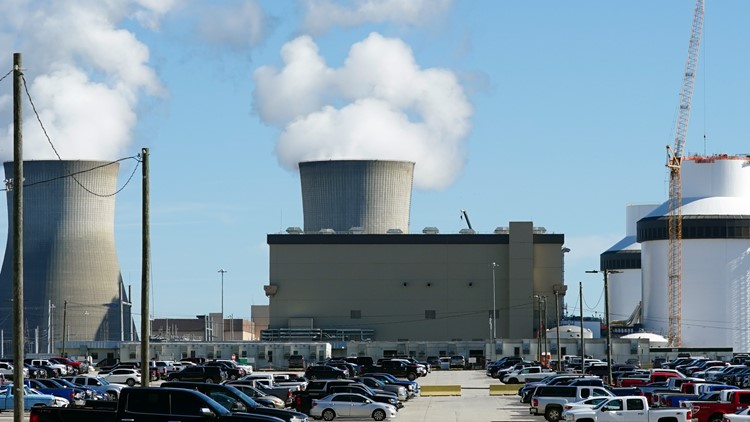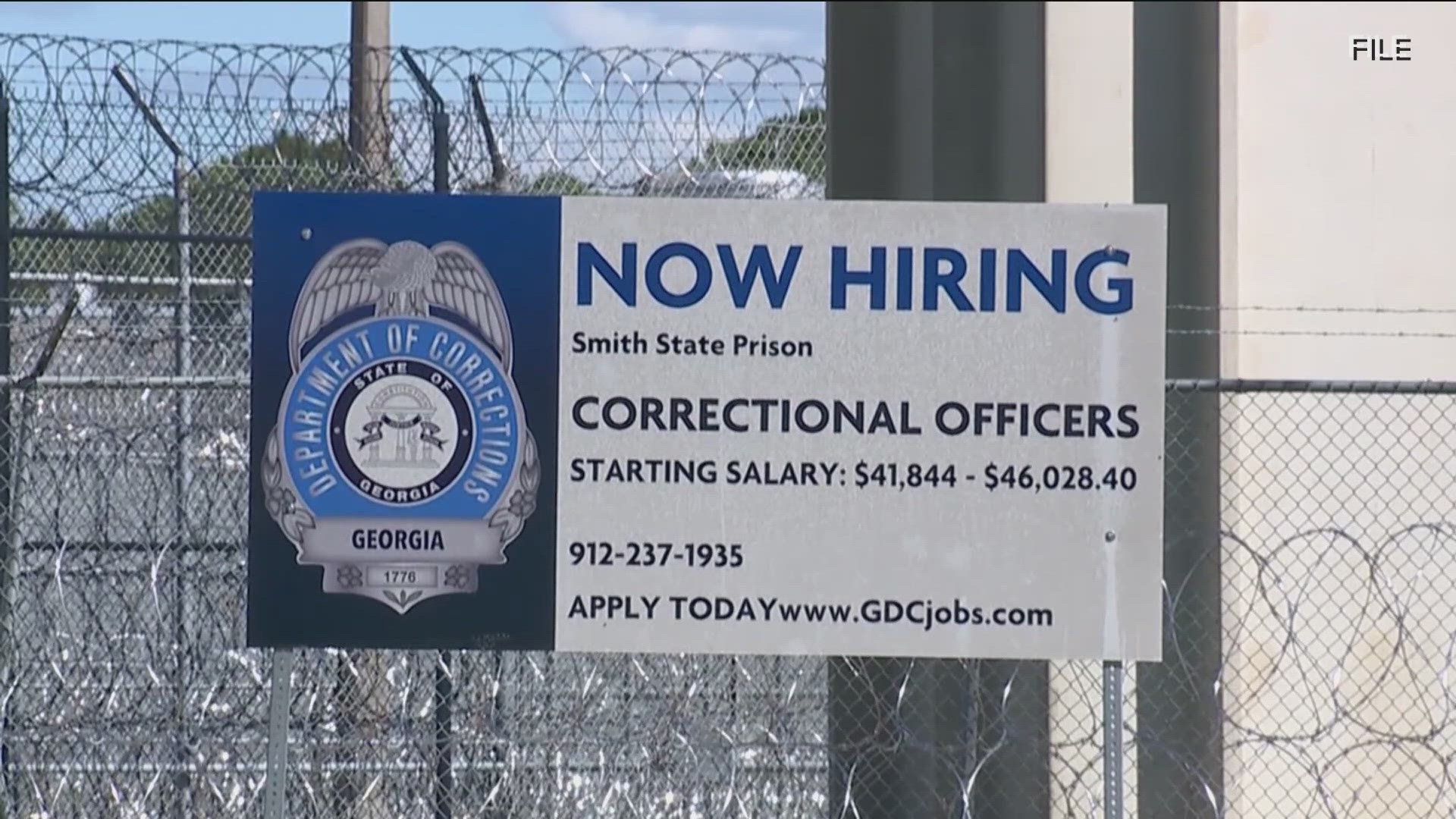WAYNESBORO, Ga. — Two nuclear reactors in Georgia were supposed to herald a nuclear power revival in the United States. But the project is seven years late and $17 billion over budget as Georgia Power Co. announced the first new reactor at its Plant Vogtle could reach full electrical output by Saturday.
They’re the first U.S. reactors built from scratch in decades — and maybe the most expensive power plant ever. Georgia electric customers have already paid billions, and state regulators will ultimately decide if they’re on the hook for billions more.
Some of the key promises of Vogtle — like building modules offsite and shipping them for cheaper on-site assembly — did not pan out. Construction delays drove Westinghouse Electric Co., a titan of American industrial history, into bankruptcy when the company couldn’t absorb overruns.
And the lessons could be important because government officials and some utilities are again looking to nuclear power to alleviate climate change by generating electricity without burning natural gas, coal and oil.
Vogtle's new Unit 3 began generating power in March and is scheduled to reach commercial operation by June. Unit 4 is next door on the same rural Burke County site 25 miles (40 kilometers) southeast of Augusta, along with two older reactors. It's supposed to be finished by early 2024.
Georgia Power and its parent, Atlanta-based Southern Co., say the reactors are a triumph. Chris Womack, before he ascended from Georgia Power to become Southern Co. CEO, told The Associated Press that Vogtle is “absolutely” a success, arguing reliable power and cheap fuel costs will benefit the utility's 2.7 million customers for decades.
“We recognize the upfront cost and some of the challenges that we faced," Womack said in January at Vogtle. "But yeah, this is value. This is value contribution to customers, to the state, to the energy grid, to bringing back the nuclear industry and showing that we can do hard things.”
As with Vogtle, supporters of future nuclear plants promise new-and-improved designs can be mass-produced at reliable prices. But Vogtle opponents scorn renewed nuclear ambitions.
“I don’t see how anybody in their right mind cannot avoid saying ‘Well, what evidence do you have?’” said David Schlissel, a utility analyst who testified against Units 3 and 4 after fighting the first two Vogtle reactors in the 1970s. They also finished fabulously late and over budget.
In Georgia, almost every electric customer will pay for Vogtle. Georgia Power currently owns 45.7% of the reactors. Smaller shares are owned by Oglethorpe Power Corp., which provides electricity to member-owned cooperatives, the Municipal Electric Authority of Georgia and the city of Dalton. Some Florida and Alabama utilities have also contracted to buy Vogtle's power.
Currently, the owners are projected to pay $31 billion in capital and financing costs, Associated Press calculations show.
Japan's Toshiba Corp., which then owned Westinghouse, paid $3.7 billion to the Vogtle owners to walk away from a guarantee to build the reactors at a fixed price after overruns forced electric industry pioneer Westinghouse into bankruptcy in 2017. Add that to Vogtle’s price and the total nears $35 billion.
A U.S. Department of Energy report details Vogtle's other failings: Work began with incomplete designs and managers repeatedly failed to realistically schedule tasks. Experienced workers were in short supply and defective work often had to be redone. Workers quit for other jobs and the COVID-19 pandemic led to high absenteeism.
Calculations show Vogtle's electricity will never be cheaper than other sources Georgia Power could have chosen, even after the federal government reduced borrowing costs by guaranteeing repayment of $12 billion in loans.
Yet regulators say Vogtle was the right choice.
“Vogtle 3 and 4 will be a success not only for Georgia but for our country the moment that they go into service," said Tricia Pridemore, who chairs the elected Public Service Commission of five Republicans. She argues nuclear power provides clean energy with prices immune from international market swings, and that building Vogtle increased U.S. nuclear engineering know-how.
Customers are already paying. Regulators estimate Georgia Power will collect $4.1 billion in advance charges, or $913 for every ratepayer. Some cooperative customers are also paying — nearly $500 million through March.
Georgia Power's residential customers will begin paying an additional $3.78 per month as soon as Unit 3 achieves commercial operation. But the final bill won't come until Unit 4 is complete. Commissioners must then decide how much of Georgia Power's spending was prudent while disallowing wasted amounts. Commissioners earlier approved $5.7 billion as prudent, but Bryan Jacob of the Southern Alliance for Clean Energy said “management failures” should be scrutinized.
“Ratepayers shouldn’t foot the bill for things that management could have done right in the first place," Jacob said.
Critics fear Georgia Power will profit from mistakes. Staff estimates show Georgia Power could earn an extra $9.4 billion in profit over 60 years if allowed to charge for all spending. Customers could pay $35.7 billion overall, $20.5 billion more than originally projected.
“If they can get away with it, they benefit from screwing up,” said Schlissel, the utility analyst.
Pridemore said it may be unfair to penalize Georgia Power for overruns beyond its control, but dismissed complaints about undue profits. “I’m very familiar with the mistakes,” Pridemore said, referring to commission monitoring of Vogtle construction.
Womack said Georgia Power won't try to collect for all overruns, promising a “balanced” outcome. Southern Co. has written off $3.26 billion in Vogtle losses since 2018, suggesting it won't recoup those costs.
“We’ll look at the best interests of our customers, but also look at the investments that we’ve made here and what’s good for the company," Womack said.
American utilities have heeded Vogtle's missteps, shelving plans for 24 other reactors proposed between 2007 and 2009. Two half-built reactors in South Carolina were abandoned.
But even opponents of Vogtle say the United States can't achieve carbon-free electricity without nuclear power. Jacob's group modeled how Southern Co. could achieve zero-carbon generation by 2035.
“It was very difficult for us to make the math work without nuclear," Jacob said.
Reactors can run almost constantly, unlike wind and solar generation, and uranium fuel adds little cost.
“It’s one of the first units that come online, because from an operational expense, it’s the lowest cost energy that’s available,” Womack said.
So nuclear proponents are trying again. A multinational partnership including the Tennessee Valley Authority seeks to build scaled-down reactors designed by General Electric and Hitachi. The first small modular reactor, under construction east of Toronto, could be complete by 2028. TVA may build one near Oak Ridge, Tennessee.
“Worldwide we need to double the amount of nuclear capacity, possibly even triple it by 2050 in order to meet our net-zero carbon goals," U.S. Assistant Secretary of Energy Kathryn Huff said in Washington in March, celebrating the partnership.
Some ideas are similar to Vogtle, including standardized designs and parts. Costs are rising for other designs planned for Idaho and Wyoming. Still, supporters believe building smaller reactors will be less daunting.
Jay Wileman, CEO of GE Hitachi Nuclear Energy, acknowledges any nuclear revival must overcome past problems.
“Nuclear has to have a seat at the table, but we’ve got to earn our seat at the table,” Wileman said in March. "And to do that, we’ve got to be on schedule, on budget, and it’s got to be a competitive cost.”
But Vogtle observers view those pledges dimly.
“The industry has no track record of being right,” Schlissel said.



